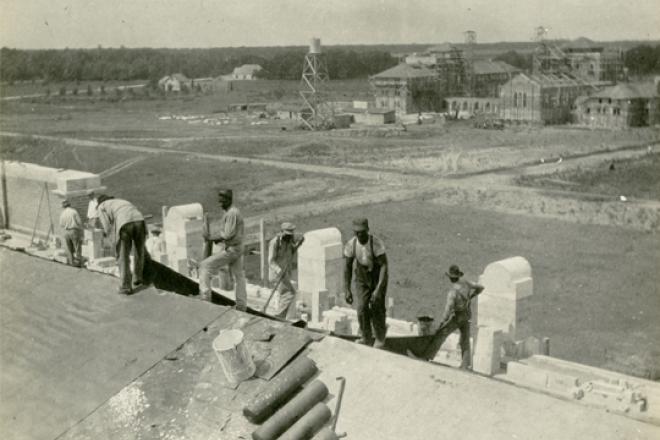Chronicle columnist (and former Cite editor) Lisa Gray recently reported on the plans to rebuild Market Square Park with a dog run, a food stand, and maybe a farmers' market. This builds on a report done by the non-profit Project for Public Spaces, which in 2005 named Market Square to its list of the 16 squares worldwide most in need of improvement. Will the new plan succeed?
Market Square park was rebuilt only 15 years ago. Despite its comfortable benches, shading trees, and interesting public art, that design was clearly a failure. Market Square is populated only for an occasional special event; the rest of the time people (except the homeless) avoid it or hurry through. This new attempt benefits from what we've learned since then: successful parks need more than green space; they need attractions to draw people in. The local poster child for that approach is the popular Discovery Green (also built with the assistance of PPS), which is drawing crowds all through the week year round thanks to varied activities (including the current skating rink.)
But rebuilding the park won't solve Market Square's biggest problem: a broken urban fabric. Here, in the heart of Houston's original townsite, half the buildings have been replaced by parking lots. These are the black holes of the Downtown landscape: not only do they not contribute any activity, they deaden the activity around them by creating a feeling of emptiness and insecurity. What Downtown needs most is not better parks but fewer empty lots. The best thing that could happen to Market Square would be new retail and residential buildings (with structured parking) around the park.
It's too much to ask for a park to fix this. Discovery Green has drawn new development. But it's the exception, not the rule, among parks. Its success is due not just to good design and programming but to its size -- 5 times as large as Market Square -- its location close to office towers, hotels, and the convention center, its large construction budget, and its permanent onsite management. The parks that PPS hold out as models are in neighborhoods that generate a lot of activity. Parks can focus and draw from the city around them. But parks rarely create activity where there was none before.
The master plan we really need is a master plan for the Historic District around Market Square. It's been through multiple revitalizations. The most recent one, from the 1990s, seems to have run out of steam. "Urban" developments like Woodlands Market Street are the new trend in retail. But truly urban places like Market Square have a hard time competing. There are some successful restaurants (Treebeard's, Mia Bella, Kim Son) that remain and a few new ones opening up. But the area lacks an identity. Retail and restaurant owners don't know what's going to happen next door, and customers don't see Market Square as a destination. In Houston, though, master planning is done only by landowners, and an area with fractured ownership has no plan.
A dog run in Market Square would be a neighborhood ammenity for several hundred households nearby. A farmers market would be nice, though we seem to have more markets (Rice, Midtown, and Greenway Plaza, to name a few) than farmers at this point. A cafe is nice, but will it draw customers that the shuttered restaurants across the street haven't? Rebuilding a park is a good thing. But it's not enough.










